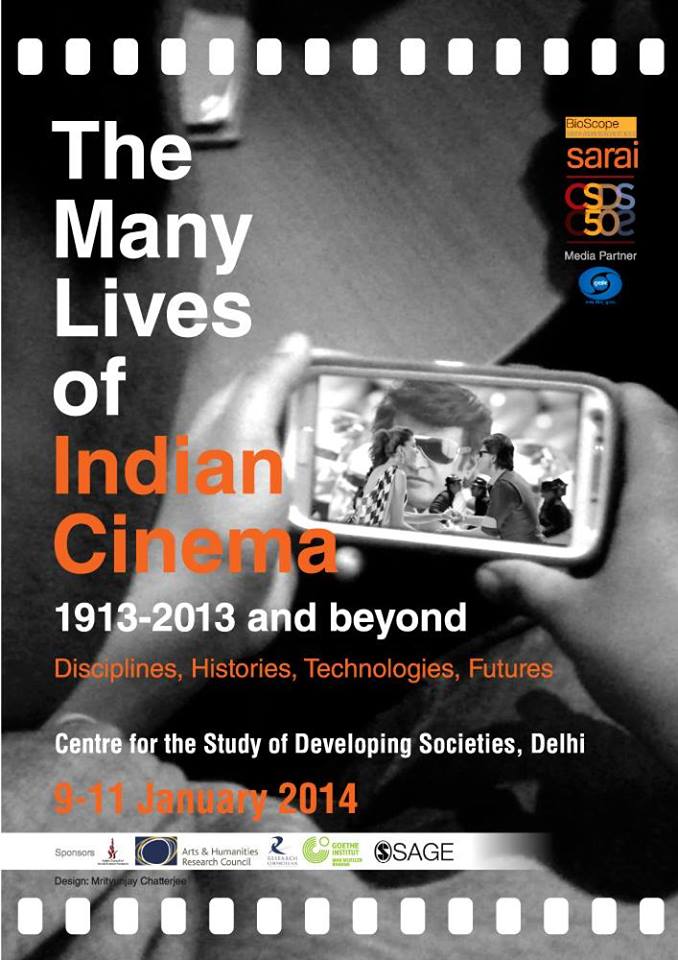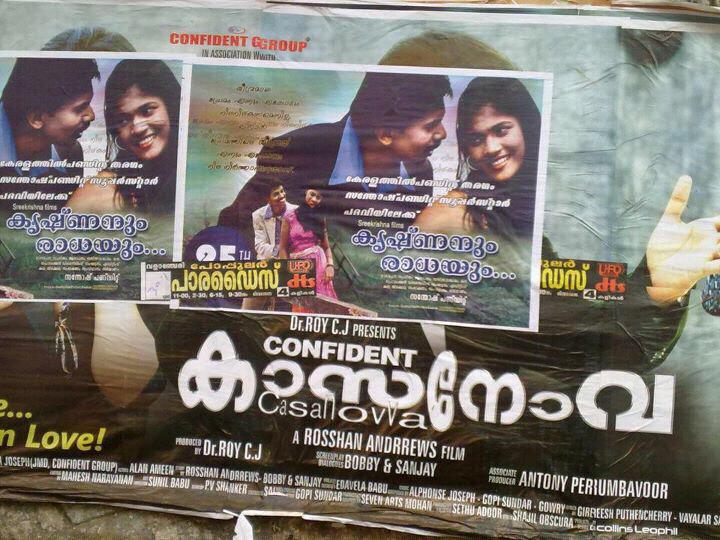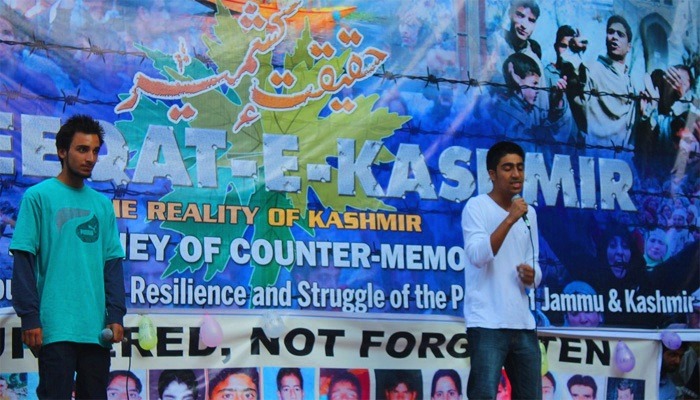Projects
-
The Many Lives of Indian Cinema Conference – Recordings – Day 01
Day 01, January 09, 2014 | Day 02, January 10, 2014 | Day 03, January 11, 2014 Histories: Connections and Comparisons Intimacy and Industry: Close Encounters Between Hollywood and Bombay Nitin Govil, University of Southern California, Los Angeles Download: OGG and MP3. Asian Cinergy: Chinese Film in the Age of the International Blockbuster and…
-
On that small mobile phone shop in your street corner
I began fieldwork in selected market areas … of Bangalore to observe the mobile phone usage of vegetable vendors, street peddlers etc. I regularly visit these streets … and build rapport with potential informants. I document my observations and follow the leads that I gather when speaking to these users about the types of phones they use, the peripherals and accessories they buy along with the phone, the costs they pay for accessing the Internet, their modes of consumption of media content etc.
-
The Camera Membrane
The Image physically remained the product of a chemical reaction, being non-reversible in character. To reproduce it was also the act of eroding it, and it was to be distributed along with a story in the print, very often claimed to be a push medium. Digital photography made the process of image making reversible. The Image was now generated on a sensor instead of a film, was now an array of RGB values ready to be copied like any other data file, to be infinitely replicated, to be analyzed, post-processed, and to be reconstructed from data.
-
Santosh Pandit: Negative Publicity and Durablity of the “Superstar of the Poor”
Till the release of the song sequence on YouTube, the name Pandit was unknown even to the most avid film enthusiasts in Kozhikode, the place from where he hails. Except a few who knew him as an enthusiastic man in his forties who was struck by the cinema-bug and attempted to make a few albums, no one had any clear memory of his talents exhibited otherwise. But, in no time he mobilized a huge fan following and a strong virtual presence through fan pages…
-
Postmemories and the Digital Afterlives of Partition
The digital space is a significant medium through which discourses on Partition, and thereby a larger South Asian identity, are enacted. This is in many ways an attempt to move from the amnesias and post-amnesias of the past by those who are both sufficiently distant from the actual event and yet strongly feel that they have a direct stake in understanding Partition and its repercussions… My focus is not as much on the memories of those who directly experienced Partition (about which there is a vast and fascinating literature), as it is on the postmemories of new generations who are spearheading digital archives, oral history projects and online peace initiatives. I am interested in the ways in which new media and communication technologies have shaped the postmemories of the post-Partition generations and the virtual ways in which they choose to remember, recover and engage with the past of their families and nations.
-
Rural Social Media and ‘Timepass’: Theorising Non-Instrumentality
[W]e first need a language to entertain the thought of entertainment as a valid if not serious use of technology which is worth studying… [M]y preliminary findings have convinced me that the potential banality of terms like development, e-governance, digital literacy, technology adoption, innovation and even Jugaad, does not allow one to grasp the wider cosmology in which digital media is being appropriated in the village.
-
Hashtag #StingOp: Truth, Low-Resolution and Post Social-Media Transparency
This project begins by considering the various (ever-mutating) physiognomies that have been deployed for the manufacturing of these video documents. It sketches the techno-material history of the production of the sting – from the changing optical devices used beginning with the large camcorders concealed in satchels used during earlier stings like Operation Westend, Gujarat riot stings etc. right up to the latest high-resolution spy-cams disguised in eye-glasses, diaries, calendars, ear plugs and various other innocuous seeming subjects to the complex processes in post-production. I am deeply interested in the careful technical packaging of the sting video … [and] the various post-production effects often deployed to accentuate the sense of authenticity/truth to the sting footage.
-
Aims and Faces behind Kashmir’s Alternative Media
The saying, “In war, truth is the first casualty,” holds true to Kashmir. There are multiple versions of a single event and there is no absolute truth. Also, being a disputed conflict zone, there is limited space for freedom of speech and freedom to express ideas. Thus the rise of alternative media is significant. Hence, it is important to reveal the story behind its rise and the story of people who gave birth to it and what they aim. It is important to put into perspective why these activists chose this path.
-
Digital Histories of Partition: Memory, Archives and the Narration of a ‘South Asian’ Identity Online
By focusing on the transnational South Asian histories, national and diasporic identities negotiated online through Partition-related narratives and archives, this project will interrogate the effect of new media technologies on South Asian memory and history. Memories of Partition stand at the crossroads of the personal and the political, by being a personal tale of displacement and trauma that is also simultaneously a constitutive moment in the construction of national identity and the birth of the nation-state. This dissonance is exemplified in the digital archiving of memories and histories of Partition.
-
Digital Divide, Online Offense: Malayalee House, “Pandit Phenomenon” and Morality Debates in Contemporary Kerala
My project looks at two contemporary phenomena in the Kerala mediascape — the emergence of “internet celebrity” Santhosh Pandit, and the recent reality TV show, Malayalee House, both of which have been amplified by the digital-social media’s potential to unsettle intended trajectories and uses of media circulation. In corollary, these have also inaugurated new ways of thinking about what it is to be a “media celebrity” in Kerala.






